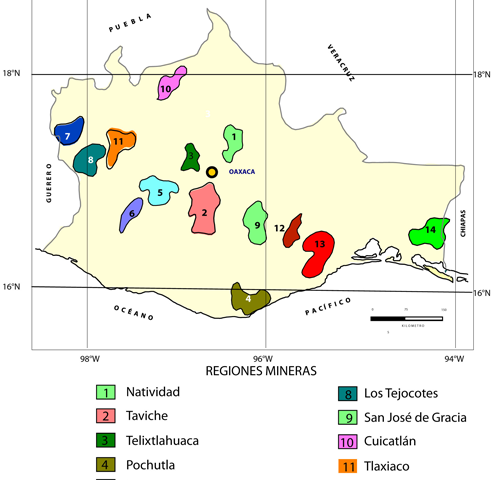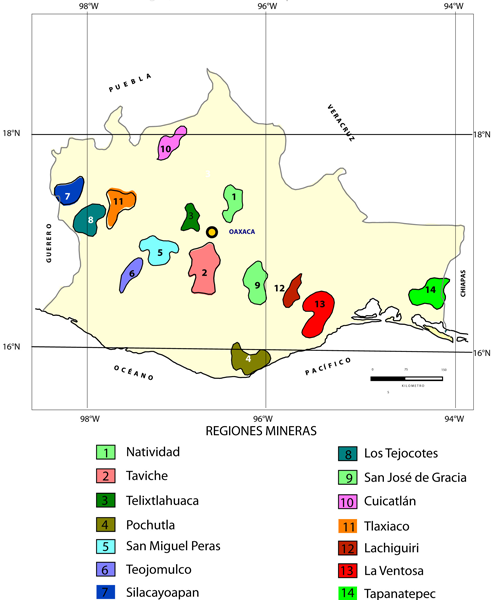SI 5 – Land
31/03/2012MIGRATION
31/03/2012Water/Electricity
- The Chimalapas region is the source of 40% of the rivers in Mexico.
- The state of Oaxaca has various dams that provide for irrigation and the generation of hydroelectric power. Among the most important are those of Temazcal, el Cerro de Oro, Marquéz, and Yosocuta. In the state there are two hydroelectric plants generating electric power: Tamazulapam and Temazcal.
- With regards to the production of electricity, the La Venta Wind Power Plant has been in operation since 1994. In the Isthmus of Tehuantepec, it has been suggested to construct a wind-energy corridor that would include more than 2,000 wind turbines. Campesino and indigenous organizations from the region oppose this project because of their environmental, economic, social, and cultural implications.
- For the year 2009, Oaxaca contributed 0.9% of the country’s total electrical production, 4.6% of Mexico’s total hydroelectric production and 99.9% of wind electricity. Source: INEGI 2009
… … … … … …
Minerals
- In the state of Oaxaca there is a wide variety of minerals. There is evidence of exploitation of minerals and precious stones in the region even before the Conquest. Important sites can be found within the 14 mining regions, which are grouped according to their mineral type. The minerals that make up the largest mines in the state are for silver, copper, iron, flake graphite, coal, gypsum and travertine.
- The value of the mineral production in the state in 2009 was 798 million Mexican pesos.
- According to the Mining Program of the Ministry of Economy (2011), 7.78% of the surface area of Oaxaca is under concession to mining companies.
- In 2010, 48.1% of foreign direct investment went to the mining sector (INEGI 2011).
… … … … … …
Agriculture
- 34.2% of the population in the state works in the primary sector. 82.5% of the state’s surface area is used for farming or forestry (INEGI 2007).
- Corn is the main crop grown in Oaxaca. Beans, wheat, sugar cane, agave, and maguey (2nd largest producer of that product nationally) and papaya (1st largest producer in the country) are the main other products grown in the state (INEGI 2010).
… … … … … …
Biodiversity
- Oaxaca is among the states of Mexico with the greatest biodiversity. Oaxaca includes the following ecological zones: humid tropical (44.4%), sub-humid tropical (35.5%), and temperate (about 20%).
- Oaxaca and Chiapas occupy the 1st and 2nd place nationally as regards to biodiversity and unpolluted fresh water, according to the Maderas del Pueblo del Sureste 2007.
… … … … … …
Vegetation
- It is calculated that 9,000 species of plants exist in Oaxaca (more than 50% of the national total).
- Forestry is part of the potential richness of the state, primarily in the Sierra Norte and Sur regions as well as the lower Mixteca, and with precious woods in the Chimalapas region.
… … … … … …
Fauna
The fauna of Oaxaca is varied and the following have been registered:
- 264 species and subspecies of mammals (50% of the national total)
- 701 species of birds (63%)
- over 467 species of reptiles (26%)
- over 100 species of amphibians (35%)
Source : National Ecology Institute
The Chimalapas region itself includes 31.3% of the mammal species in Mexico, 32.3% of the bird species, and 44.5% of the butterfly species.
… … … … … …
Protected Natural Areas
Protected Natural Areas are terrestrial or aquatic areas on national territory which are representative of various ecosystems in which the original environment has not been essentially altered and that produce ecological benefits. The National Commission of Protected Natural Areas currently administers 174 federal natural areas on more than 25.3 million hectares (12.92% of Mexico’s total surface).
Source: SEMARNAT 2010
Oaxaca has 8 Protected Natural Areas: Reserva de la Biosfera Tehuacan Cuicatlán, Parque Nacional Huatulco, Parque Nacional Lagunas de Chacahua, Parque Nacional Benito Juárez, Monumento Natural Yagul, Santuario Playa Escobilla, Santuario de la Playa de la Bahía de Chacahua and el Área de Protección de Flora y Fauna Boquerón de Tonala.
The National Institute of Ecology emphasizes another interesting fact: in the case of Oaxaca, “the conservation of natural spaces can emerge from other normative orders in the management of natural resources, such as the Forestry Management Programs, the establishment of Communitary Statutes and Agrarian Laws, and productive strategies, such as traditional coffee cultivation, the management of secondary vegetation, ecotourism, as well as the symbolic concepts of the indigenous and campesino communities that favor the conservation of important natural areas. This is reflected in the figures of forest areas protected by community initiatives (67,916 hectares) and informal conservation efforts (47,742 hectares) (…) which total just over 115,000 hectares, which represents 32% of the total surface area protected by formal initiatives.”
Although it is one of the states with the greatest biodiversity in Mexico, Oaxaca has high rates of destruction of its natural resources: it is estimated that there is an annual loss of 30,000 hectares of forest and severe erosion of 20% of the state (4th nationally). This is primarily due to the unmoderated logging of trees and the illegal trafficking of wood, forest fires that are recorded annually, the pillaging of protected species of flora and fauna, mineral extraction, and the privatization of fresh water.
Source: Secretaría de Desarrollo Agropecuario, Forestal y Pesca (Sedafp)


